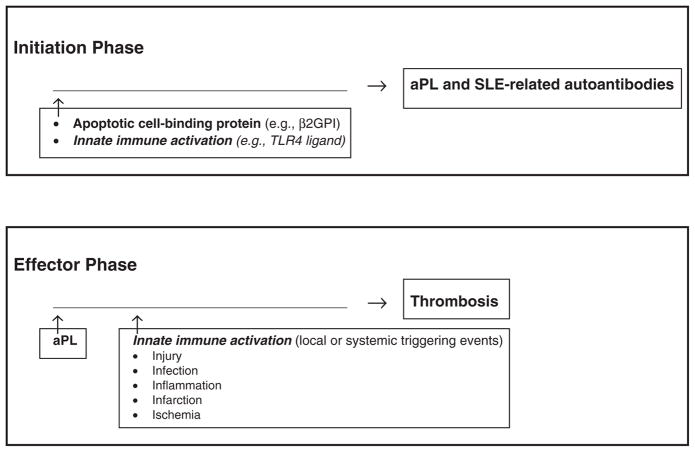Figure 1.
Proposed dual role of innate immunity in the antiphospholipid syndrome (APS). The model proposes two phases in the development of APS, both dependent on innate immune activation: (1) an ‘initiation (or immunologic) phase’, in which the role of innate immunity is to amplify the adaptive immune response (e.g. to a phospholipid/apoptotic cell-binding protein such as β2-glycoprotein I [β2GPI]), leading to the long-lived production of antiphospholipid antibodies (aPL) and other SLE-related autoantibodies; and (2) an ‘effector (or pathologic) phase’, in which the role of innate immunity is to enhance the prothrombotic effects of aPL via priming of the vascular endothelium (e.g. activation and/or disruption) at the site of eventual thrombosis. Innate immunity may be triggered by local or systemic events, such as injury, infection, inflammation, infarction, or ischemia. TLR4: toll-like receptor 4.

